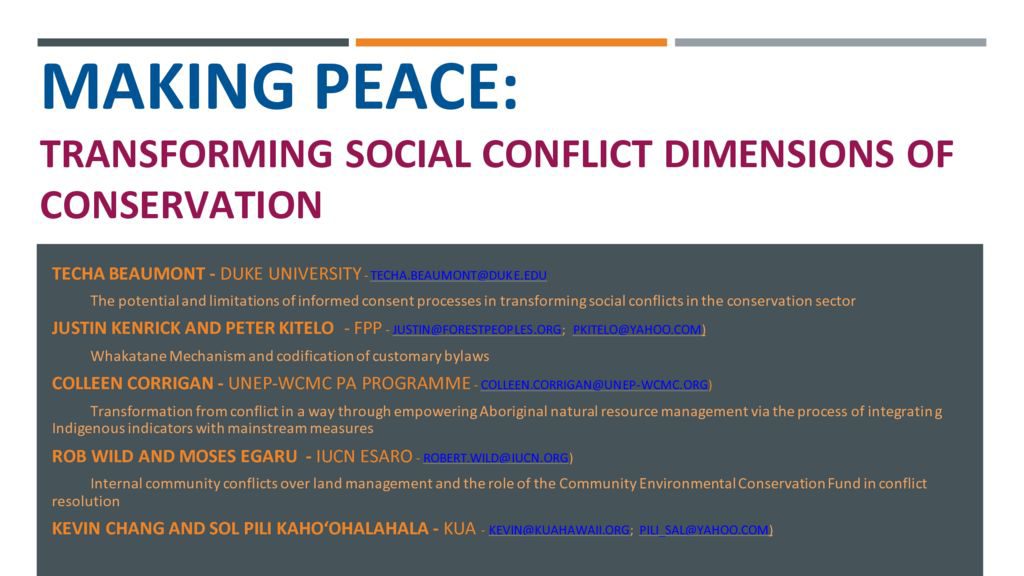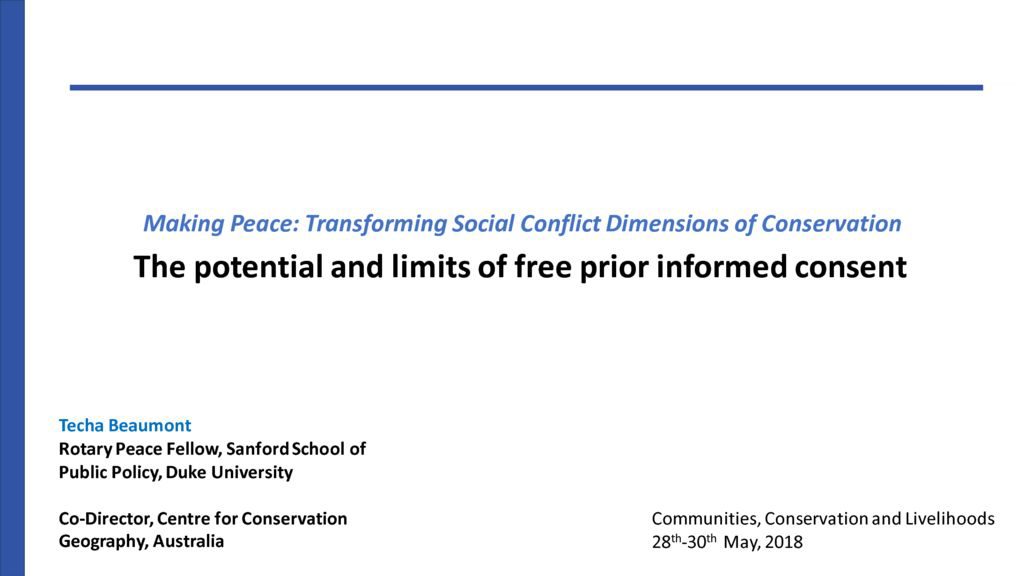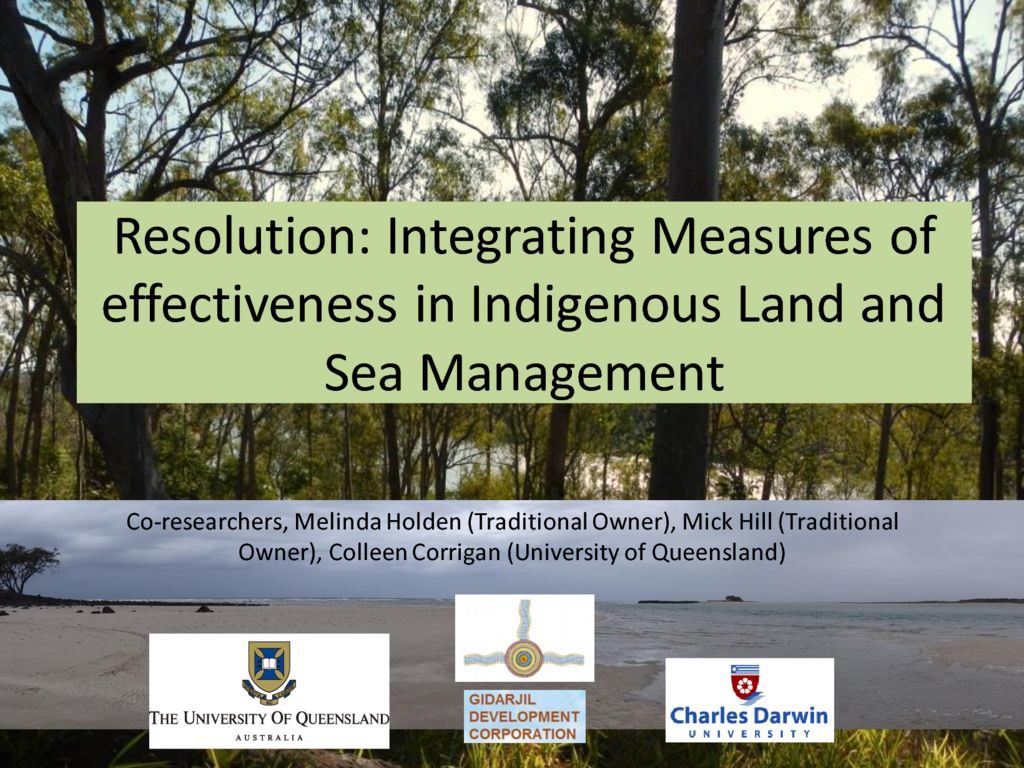25 Mar Making Peace: Transforming Social Conflict Dimensions of Conservation
Nature conservation has striven to keep harmful human activities from unsustainably impacting wildlife, natural resources, and protected areas. A growing diversity of voices highlight that conservation itself is challenging human livelihoods, cultures, and often contributing to conflict – which can undermine the objectives of nature conservation. The conservation community itself is conflicted, with different approaches and viewpoints that do not always reconcile. Transforming social conflicts in the context of conservation needs to start within the conservation community itself. Making peace from within could contribute towards making peace from without, embracing other communities, whether they are the private sector, governments, traditional communities, or otherwise.
Making peace and conflict resolution are complex processes that require effective facilitation skills and (re)framing of narratives. This page explores how peacemaking skills, expertise, and resources might be brought together to contribute substantially to transforming social conflict dimensions of conservation.
Central questions discussed here include:
- Idea of best practice in protected areas – can this be an effective tool in generating consensus action that transforms conflict. i.e. preventing, monitoring and assessing conflict more effectively?
- Which best practice tools/mechanisms/processes in protected areas are working in resolving social conflicts?
- How do we embrace effective inclusion, diversity, recognition and a coming together of worldviews?
- Are the social conflicts of conservation being resolved through dialogue, science or mechanisms for stakeholder participation? How?
- What is our role as peacebuilders working in nature? What should the IUCN’s role be?
- What is conservation’s commitment to peace? How do we foster this in practice?





